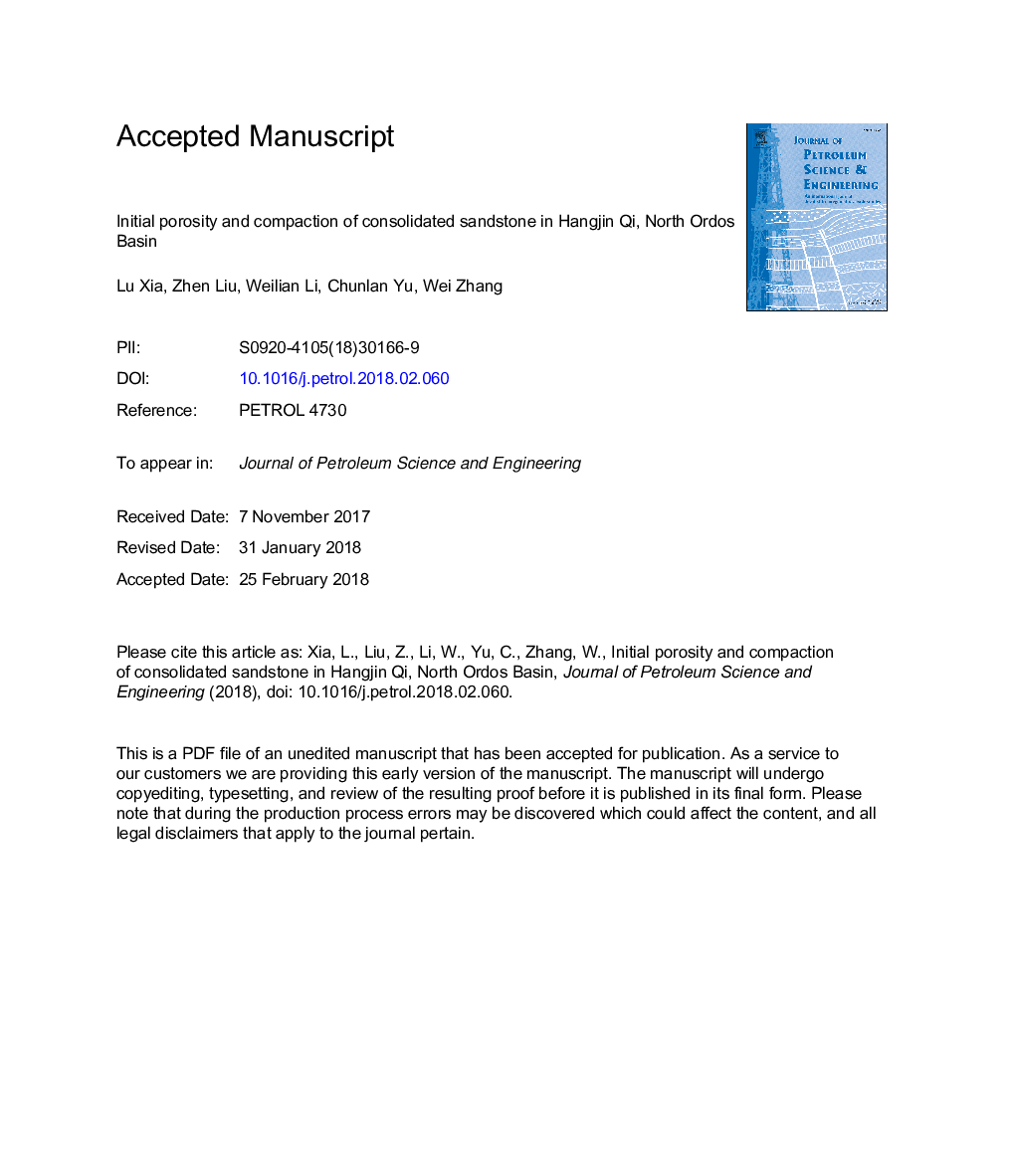| Article ID | Journal | Published Year | Pages | File Type |
|---|---|---|---|---|
| 8124907 | Journal of Petroleum Science and Engineering | 2018 | 45 Pages |
Abstract
Compaction is an important part of diagenesis affecting porosity in conjunction with burial depth and time. However, the relation between initial porosity and sandstone compaction remains unclear. This paper aims to clarify the effect of initial porosity on the compaction of consolidated sandstone in the microdeformation stage via experiments, mathematical modeling, and statistical analyses. According to the physical experiments in the Ordos Basin, sandstone porosity decreases with increasing overburden load, and the porosity-decrease trends of two similar samples with different initial porosities converge gradually. Based on the Bingham visco-elasto-plastic stress-strain model, a theoretical model for the vertical uniaxial compaction of consolidated porous rocks was constructed. The equivalent viscosity coefficient (EVC) of consolidated sandstones was approximately estimated by a contrastive analysis and an iterative computation on the basis of the geologic statistical model proposed in this study. The results in Hangjin Qi show that the Young's modulus and the EVC of low-porosity compaction trend (LPCT) are exponential and power-law functions of the corresponding porosity, respectively. The derivation of theoretical model indicates that the compressibility and the initial porosity of porous sandstone during microdeformation are positively correlated, in accordance with simulation experiments. The initial porosity affects the elastic modulus and the viscosity coefficient and consequently, the sandstone compaction during microdeformation stage. Such an effect can contribute to the improvements of both the compaction degree analyses of different burial processes in sandstone porosity evolution and reservoir quality evaluation.
Related Topics
Physical Sciences and Engineering
Earth and Planetary Sciences
Economic Geology
Authors
Lu Xia, Zhen Liu, Weilian Li, Chunlan Yu, Wei Zhang,
